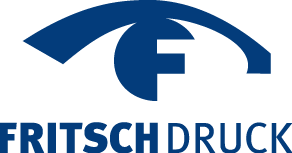H-UV offset printing (LE-UV)
or white printing; see also UV offset printing
H-UV offset printing ink and is based on a new drying system in which the printing ink is cured immediately.
Technical background
UV Offset printing is a long-standing Applied in printing industry procedures. UV ink does not dry as conventional oil-based ink by absorption and oxidation, but hardens by polymerization of. This polymerization is a chain reaction, and is excited by photoinitiators. Unlike conventional UV systems, the radiation of the new H-UV dryer is matched by iron doping on a narrower wavelength range (270-460 nm). This produces no harmful ozone radiation (200-260 nm) nor excessively high heat (400-500 nm). The ink to be used is matched with their photoinitiators exactly this wavelength range and cures in milliseconds. The energy requirement is only 3.1 compared to conventional UV systems and the substrate is due to the low heat radiation less stress (4-5 ° C above ambient temperature). In contrast to conventional UV-color H-UV ink is largely odorless and recyclable.
Effect
With the increased pigmentation of the H-UV ink printing achieved compared to conventional offset a higher brilliance and special colors can be better interpreted in CMYK. Because of the immediate drying of the ink application can be significantly higher, the color impression not changed by the drying process and the image reproduction on uncoated materials is clearly faithful to detail, because the color can not penetrate the material. The H-UV ink is much more abrasion resistant (polymeric curing) as an oil-based ink, so many quality problems in the printing industry is excluded or minimized as far as possible (e.g. carbonating, filing, polishing, etc.). The pressure can be completely dispensed with spray powder. This results in additional quality benefits for subsequent operations, such as printing more courses, film lamination or bookbinding. The rough feel of powdered printed matter, especially in dark images, thus belongs also to the past.
Application possibilities
In general, all prepared in the conventional offset printing products can be realized also in the H-UV printing. But in addition may also be non-absorbent materials, such as transparent paper, PVC, polyethylene, and metalized surfaces, can be printed. With high-gloss coatings (> 90 gloss points) are high quality finishes possible. When using opaque white transparent materials can back-printed or colored or metallized surfaces are provided with special effects. Due to the immediate drying immediate processing is possible, so are significantly shorter delivery times can be achieved. The high abrasion resistance of the H-UV ink, can be largely dispensed with protective lacquer (except under high mechanical stress), thereby preserving the original white and feel of the printed material. On matt coated paper creates a pleasant contrast between the matt paper and the slightly glossy ink, which makes reading more pleasant.
Limitations
For UV special applications (e.g. tinplate printing) H-UV is not suitable because it requires several dryers. Currently still no low-migration ink for food packaging is available.
Costs
The costs for H-UV inks are about 3 times as high as for conventional oil-based inks because of the special photoinitiators. For this, the consumption is slightly smaller because of the lack of penetration and dispersion varnish used for the protection can usually be dispensed with.
